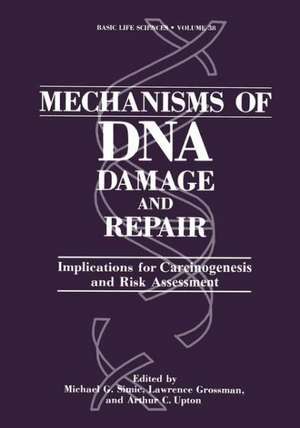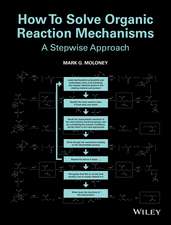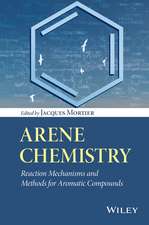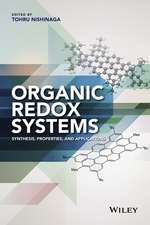Mechanisms of DNA Damage and Repair: Implications for Carcinogenesis and Risk Assessment: Basic Life Sciences, cartea 38
Autor Michael G. Simic, Lawrence Grossman, Arthur C. Upton, David S. Bergtolden Limba Engleză Paperback – 22 dec 2012
Din seria Basic Life Sciences
- 5%
 Preț: 378.07 lei
Preț: 378.07 lei - 15%
 Preț: 647.73 lei
Preț: 647.73 lei - 5%
 Preț: 383.55 lei
Preț: 383.55 lei - 15%
 Preț: 649.06 lei
Preț: 649.06 lei -
 Preț: 401.03 lei
Preț: 401.03 lei - 5%
 Preț: 730.71 lei
Preț: 730.71 lei - 5%
 Preț: 736.92 lei
Preț: 736.92 lei - 5%
 Preț: 726.68 lei
Preț: 726.68 lei - 5%
 Preț: 729.26 lei
Preț: 729.26 lei - 18%
 Preț: 960.61 lei
Preț: 960.61 lei - 5%
 Preț: 375.85 lei
Preț: 375.85 lei - 5%
 Preț: 744.05 lei
Preț: 744.05 lei - 5%
 Preț: 740.58 lei
Preț: 740.58 lei - 5%
 Preț: 733.82 lei
Preț: 733.82 lei - 5%
 Preț: 719.38 lei
Preț: 719.38 lei -
 Preț: 397.59 lei
Preț: 397.59 lei - 5%
 Preț: 390.85 lei
Preț: 390.85 lei - 15%
 Preț: 657.57 lei
Preț: 657.57 lei - 5%
 Preț: 382.99 lei
Preț: 382.99 lei - 5%
 Preț: 400.56 lei
Preț: 400.56 lei - 5%
 Preț: 739.69 lei
Preț: 739.69 lei - 15%
 Preț: 657.25 lei
Preț: 657.25 lei - 18%
 Preț: 959.67 lei
Preț: 959.67 lei -
 Preț: 401.24 lei
Preț: 401.24 lei - 15%
 Preț: 658.88 lei
Preț: 658.88 lei - 5%
 Preț: 387.39 lei
Preț: 387.39 lei - 5%
 Preț: 376.95 lei
Preț: 376.95 lei - 5%
 Preț: 768.39 lei
Preț: 768.39 lei - 5%
 Preț: 735.83 lei
Preț: 735.83 lei - 15%
 Preț: 651.19 lei
Preț: 651.19 lei - 18%
 Preț: 1228.47 lei
Preț: 1228.47 lei - 15%
 Preț: 595.36 lei
Preț: 595.36 lei - 5%
 Preț: 736.39 lei
Preț: 736.39 lei - 5%
 Preț: 730.55 lei
Preț: 730.55 lei - 18%
 Preț: 960.30 lei
Preț: 960.30 lei - 5%
 Preț: 738.93 lei
Preț: 738.93 lei - 15%
 Preț: 663.60 lei
Preț: 663.60 lei -
 Preț: 395.25 lei
Preț: 395.25 lei - 5%
 Preț: 739.13 lei
Preț: 739.13 lei - 15%
 Preț: 639.59 lei
Preț: 639.59 lei - 5%
 Preț: 377.52 lei
Preț: 377.52 lei - 5%
 Preț: 721.40 lei
Preț: 721.40 lei - 18%
 Preț: 1241.10 lei
Preț: 1241.10 lei - 18%
 Preț: 1233.69 lei
Preț: 1233.69 lei
Preț: 662.16 lei
Preț vechi: 779.02 lei
-15% Nou
Puncte Express: 993
Preț estimativ în valută:
126.70€ • 132.64$ • 104.84£
126.70€ • 132.64$ • 104.84£
Carte tipărită la comandă
Livrare economică 05-19 aprilie
Preluare comenzi: 021 569.72.76
Specificații
ISBN-13: 9781461594642
ISBN-10: 1461594642
Pagini: 596
Ilustrații: XV, 578 p.
Dimensiuni: 178 x 254 x 31 mm
Greutate: 1.02 kg
Ediția:Softcover reprint of the original 1st ed. 1986
Editura: Springer Us
Colecția Springer
Seria Basic Life Sciences
Locul publicării:New York, NY, United States
ISBN-10: 1461594642
Pagini: 596
Ilustrații: XV, 578 p.
Dimensiuni: 178 x 254 x 31 mm
Greutate: 1.02 kg
Ediția:Softcover reprint of the original 1st ed. 1986
Editura: Springer Us
Colecția Springer
Seria Basic Life Sciences
Locul publicării:New York, NY, United States
Public țintă
ResearchCuprins
to Mechanisms of DNA Damage and Repair.- History of Radiation Biology from a Personal Point of View.- DNA Damage.- Mechanisms of Damage.- Comparison of Mechansms for DNA Strand Break Formation by the Direct and Indirect Effect of Radiation.- Eletron Spin Resonance Studies of the Mechanism of Radiation Damage to DNA.- Free Radical Mechanisms of DNA Base Damage.- Peroxyl Radicals of Nucleic Acids and Their Components.- Radiation-Induced Peroxidation of DNA and Effects of Redox-Active Agents.- The Radiation Chemistry of the Purine Bases Within DNA and Related Model Compounds.- Bacteriophage DNA as a Model for Correlation of Radical Damage to DNA and Biological Effects.- Damage in Cells.- Ultrafast Chemical Repair of DNA Single and Double Strand Break Precursors in Irradiated V79 Cells.- Assessment of DNA Damage by Filter Elution Assays.- DNA Modification by Sulfur Mustards and Nitrosoureas and Repair of These Lesions.- Intragenomic Localization of Carcinogen-DNA Damage.- Ionizing Radiation Induced DNA Damage: Identities and DNA Repair.- Effects of LET? on the Fate of DNA Damage Induced in Rabbit Sensory Cells In Situ: Fundamental Aspects.- Radiation Damage to DNA in Various Animal Tissues: A Comparison of Yields and Repair In Vivo and In Vitro.- Differential Regulation of Base and Nucleotide Excision Repair in Mammalian Cells.- Immediate and Repair Induced DNA Double Strand Breaks in Mammalian Cells.- DNA-Protein Cross-Links: New Insights into their Formation and Repair in Irradiated Mammalian Cells.- DNA-to-Protein Crosslinks and Backbone Breaks Caused by Far-and Near-Ultraviolet and Visible Light Radiations in Mammalian Cells.- DNA Binding Drugs.- Sequence Specificity and Biological Consequences of Drugs that Bind Covalently in the Minor Groove of DNA.- MolecularRecognition of DNA Binding Agents: High-Field 1H and 31P One- and Two-Dimensional NMR Studies on the 1:1 Intercalation Complexes of Mitoxantrone with selected Oligodeoxyribonucleotides.- DNA Binding and Biological Properties of Bis and Tris Intrcalating Molecules.- Novel Types of DNA-Sugar Damage in Neocarzinostatin Cytotoxicity and Mutagenesis.- DNA-Drug Binding and Control of Genetic Information.- Computer-Aided Design of New DNA Intercalators.- DNA Repair and Consequences.- Differential Expression of SOS Genes in an E. Coli Mutant Producing Unstable LexA Protein Enhances Excision Repair But Inhibits Mutagenesis.- Mutagenic DNA Repair in Bacteria: The Role of UmuDC and MucAB.- The Repair of Pyrimidine Dimers Via a DNA-Glycosylase Mechanism.- The Involvement of an E. Coli Multiprotein Complex in the Complete Repair of UV-Damaged DNA.- Pyrimidine Dimer Induced Alteration of DNA Tertiary Structure Evidence for Unwinding and Shortening.- Mismatch Correction.- Molecular Approaches to the Study of Nucleotide Excision Repair in Eukaryotes.- Restoration of DNA Repair in UV-Sensitive Chinese Hamster Ovary Cell by the denV Gene from Bacteriophage T4.- The Adaptive Response of Mammalian Cells to Alkylating Agents.- DNA Glycosylases in DNA Repair.- Apurinic Sites as Common Intermediates in Mutagenesis.- The Repair of Uracil-Containing DNA.- Metabolic Consequences of DNA Damage: The Role of Poly (ADP-Ribose) Polymerase as Mediator of the Suicide Response.- DNA Damage, DNA Repair and Induced Mutagenesis: Some Enzymological and Structural Considerations.- Mechanisms of Mutagenesis of E. Coli by Ultraviolet Light.- Activation of H-ras-1 Oncogenes by Chemical Carcinogens.- Activation of the c-myc Oncogene.- Salmonella Tester Strains: Mutational Targets and Correlation with Animal Carcinogenicity and Teratogenicity.- Mechanisms of Spontaneous Mutagenesis: Clues from Mutational Specificity.- Risk Assessment.- Use of Gradient Denaturing Gels to Determine Mutational Spectrum in Human Cells.- Urinary N-Nitrosamino Acids as Indices of Endogenous Formation of N-Nitroso Compounds.- Application of Monoclonal Antibodies to Monitor Human Exposure to Aflatoxin Bl.- Blood Proteins as Carcinogen Dosimeters.- Development of an Avidin-Biotin Amplified Enzyme-Linked Immunoassay for Detection of DNA Adducts of the Human Bladder Carcinogen 4-Aminobiphenyl.- Intragenomic Heterogeneity in DNA Damage Processing: Potential Implications for Risk Assessment.- The Role of Pharmacokinetics in Risk Assessment.- Immunologic Quantification of Carcinogn-DNA Adducts.- Interpretation of Genotoxicity Data in Assessing the Risks of Genetic Diseases.- Background Levels of DNA Damage in the Population.- Use of Models in Low-Dose Extrapolation.- Problems in Interspecies Comparisons.- The Time to Tumor Approach in Risk Assessment.- The Role of Nutritional Factors in Cellular Protection Against DNA Damage, Altered Gene Expression and Malignant Transformation.- The Role of Risk Assessment in Food Safety Policy.- Contributors.






